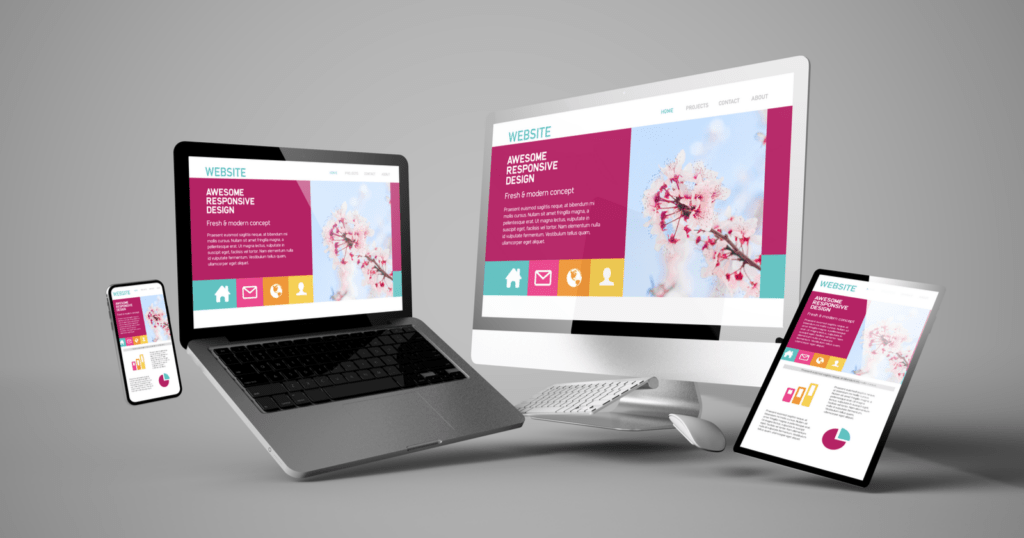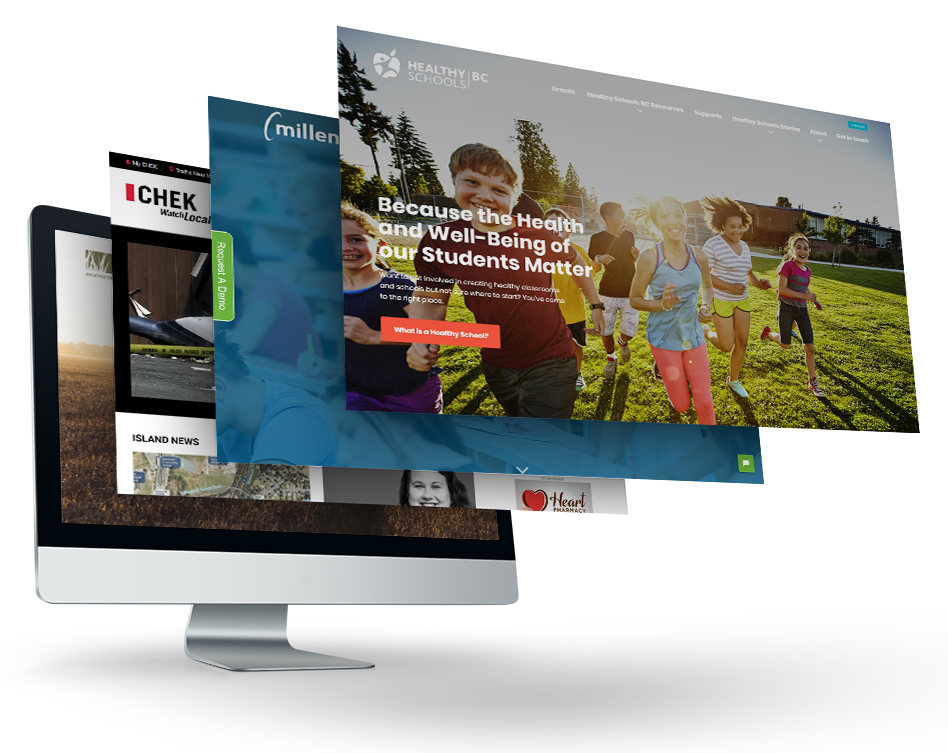Website Design in copyright: Crafting Custom Websites for Every Business
Achieve Online Success With User-Friendly Site Style
In the progressively affordable digital landscape, the layout of an internet site can be an essential variable in figuring out a service's success. Easy to use style not only improves the total individual experience but also influences crucial metrics such as engagement, conversion, and retention rates.
Value of Customer Experience
Individual experience (UX) plays a crucial role in the success of a site, as it straight affects user contentment and interaction. A favorable UX ensures that site visitors can navigate the site effortlessly, accessibility information rapidly, and full desired actions, such as authorizing or making an acquisition up for a newsletter, without disappointment.
In a digital landscape where competitors is strong, a site that prioritizes UX can dramatically improve brand loyalty and retention. Users are most likely to go back to a website that uses a seamless experience, developing a cycle of repeat check outs and raised client life time value. Efficient UX layout can minimize bounce prices, as individuals are much less inclined to leave a website that fulfills their requirements successfully.
Additionally, online search engine increasingly take into consideration user experience aspects when ranking websites. Aspects such as web page load speed, mobile-friendliness, and instinctive navigation can influence a site's presence in search engine result. By concentrating on UX, services not just boost customer interactions however additionally enhance their online existence and trustworthiness. Hence, purchasing individual experience is crucial for accomplishing lasting success in the electronic market.
Trick Principles of User-Friendly Design
A successful easy to use style pivots on numerous key principles that enhance functionality and accessibility. First and foremost is simplicity; a clutter-free user interface enables individuals to browse easily, minimizing cognitive load. This principle highlights the relevance of concise and clear web content, permitting customers to discover details promptly without unneeded diversions.
Uniformity is an additional crucial part. Regular use shades, designs, and fonts cultivates knowledge and constructs trust. Individuals should really feel comfortable as they explore various sections of the internet site, recognizing that similar elements symbolize related performances.
Effective typography additionally plays an important function in easy to use layout. Understandable fonts, appropriate sizes, and sufficient spacing make sure that web content is quickly readable throughout different gadgets. Additionally, integrating instinctive visual pecking orders helps users recognize essential details and activities at a glance.

Important Features for Navigation
Effective navigation is critical for any user-friendly internet site, as it directly affects the total customer experience. A well-structured navigation system enables individuals to situate information swiftly and successfully, decreasing stress and enhancing interaction.
One crucial feature is a intuitive and clear menu that classifies content practically - website design copyright. This food selection needs to be easily available from every web page, frequently placed at the top or on the side of the web site. Additionally, integrating get redirected here breadcrumb navigation assists customers understand their place within the website hierarchy and makes it simpler to backtrack
Browse functionality is one more important element, allowing users to find specific web content without filtering via numerous pages. This function should be prominently presented and responsive to variations in input.
Furthermore, a mobile-responsive design makes certain that navigating stays seamless throughout gadgets. As mobile usage remains to rise, food selections must adapt to different screen dimensions without endangering capability.
Last but not least, visual cues such as highlighting the energetic page and making use of hover impacts can enhance customer communication. By integrating these vital functions, website developers can produce a navigational experience that is not just easy to use but additionally motivates expedition and retention.
Access Factors To Consider
Availability considerations are integral to developing an easy to use website that accommodates all individuals, no matter their abilities or impairments (website design copyright). Web sites must be designed to make sure that individuals with aesthetic, auditory, cognitive, or motor problems can engage with content properly. This begins with adherence to the Web Web Content Availability Standards (WCAG), which offer a structure for making electronic material more easily accessible
Key techniques consist of using detailed different text for images, making sure shade comparison ratios satisfy access standards, and offering subtitles for click reference multimedia components. In addition, the navigating should be intuitive, enabling individuals to tab with web links and interactive aspects quickly. Applying key-board navigating is crucial for those unable to utilize a computer mouse.
Furthermore, succinct and clear language boosts comprehension for users with cognitive restrictions. Kinds must be straightforward, with labels and guidelines that are very easy to understand. Routine availability screening, including user comments from people with handicaps, can aid improve and identify obstacles use.
Determining Style Success

Customer comments surveys and use screening are important in analyzing the performance of style aspects. These techniques allow designers to gather straight input from individuals, recognizing pain factors and areas for renovation. Additionally, tracking heatmaps can reveal where users click most frequently, aiding to inform layout modifications and material other prioritization.
Analytics devices play a crucial function in measuring layout success by supplying data-driven insights. Google Analytics can track customer behavior, disclosing patterns that suggest whether the layout is preventing the individual or facilitating trip. Ultimately, an effective site layout not just meets service goals but likewise cultivates a seamless and enjoyable user experience, driving interaction and commitment over time. Routinely reviewing these metrics ensures that the site advances in alignment with individual demands and industry ideal practices.
Verdict
Prioritizing user experience through simplicity, instinctive navigating, and efficient responses mechanisms not only improves user interaction and contentment yet also promotes brand name commitment. Incorporating important navigating functions and ease of access factors to consider additionally ensures that all customers can successfully interact with the site.
Websites have to be developed to make certain that individuals with visual, auditory, cognitive, or electric motor disabilities can involve with content successfully.Measuring style success involves reviewing exactly how effectively a website fulfills its designated goals while giving a positive user experience. Google Analytics can track individual actions, disclosing patterns that suggest whether the design is promoting or impeding the customer trip. Inevitably, a successful site layout not just meets organization objectives yet also promotes a seamless and enjoyable customer experience, driving involvement and commitment over time. Prioritizing individual experience via simplicity, user-friendly navigating, and effective comments devices not just enhances individual engagement and contentment however likewise cultivates brand loyalty.